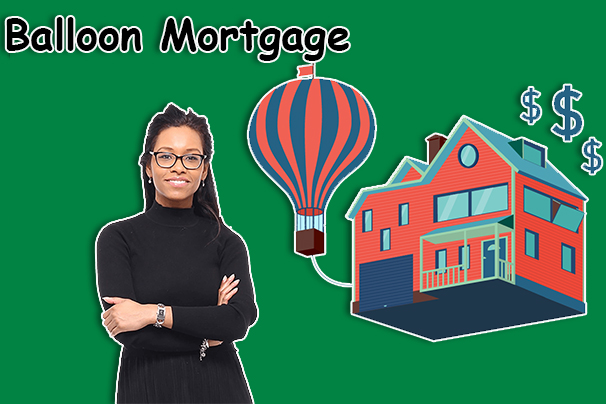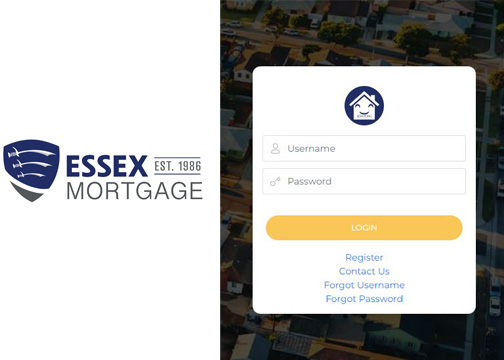The term “balloon mortgage” refers to a complex type of home financing, despite its humorous connotations. This less well-known kind of mortgage loan is distinguished by smaller monthly payments at first, followed by a higher final payment. This is frequently referred to as the “balloon payment.” This mortgage type can be dangerous and potentially lead to foreclosure if not handled carefully.

This is a type of real estate financing where monthly payments are initially minimal or nonexistent. At the end of the period, the borrower makes a lump sum payment to settle the entire balance. If there are any monthly payments, they might merely be interest, and the interest rate is typically modest.
How Does It Work
Balloon mortgages can have variable or fixed interest rates, as well as different periods and maturities. Certain short-term loans could have no amortization over the loan’s term, requiring the borrower to repay the principal and interest at maturity. Additionally, it offers interest-only payments, allowing borrowers to make monthly installments before repaying the entire amount when due.
It is a variant of the balloon mortgage in which the borrower makes fixed interest payments for a certain period of time. At the end of that time, the loan will reset, and the payment will roll over into a new or ongoing amortized mortgage at the going market rates.
Types of Balloon Mortgages
A balloon mortgage enables borrowers to make minimal monthly payments for a few years, with the remaining balance due at the end of the first term. Balloon mortgages come in three varieties.
Balloon mortgage with no payments
With a no-payment, interest keeps accruing even though the borrower usually doesn’t have to make a payment for a brief amount of time—typically five or seven years. The entire sum owed, including interest, must then be paid.
Balloon mortgage with only interest
An interest-only means the borrower pays monthly payments only on the interest their loan is accruing. They only need to repay the principal at the conclusion of the loan term. With this kind of mortgage, borrowers take longer to accumulate equity on their home.
Balloon payment mortgage
Borrowers who have a balloon payment mortgage pay off the interest on a 15- or 30-year mortgage over a significantly shorter period of time, usually five or seven years.
Advantages of a Balloon Mortgage
For the proper customers, balloon mortgages are a more affordable option than fixed-rate or adjustable-rate mortgages since they often have lower interest rates. Customers who intend to stay in their property for a little amount of time can find it advantageous to take out a balloon mortgage. Suppose they intend to relocate in three years.
Before the massive balloon payment, they can sell their house and secure a five-year balloon mortgage at a reduced interest rate. For those who receive substantial bonuses but a more modest salary, this may also be a possibility. The balloon loan allowed them to use larger annual lump sums to cover the balloon payment after monthly mortgage payments were within their means.
Disadvantages of a Balloon Mortgage
For homeowners who don’t intend to sell their houses before the balloon payment is due, a balloon mortgage is a dangerous choice. Before the large payment, they frequently anticipate refinancing their loan to a conventional fixed-rate or adjustable-rate mortgage. If they are unable to pay the balloon payment, this is frequently the best course of action.
It is challenging to refinance a mortgage loan with negative equity if the home has lost value or if the borrower is underwater on their mortgage. Before granting a refinance request, the majority of lenders demand that the home have at least 20% equity.
Should You Take Out a Balloon Mortgage
Getting a mortgage with balloon payments is risky for most people. Your plans to sell or refinance before the last payment is due may not work out because of changes in the market. After that, you will have to make a sizable payment and risk foreclosure if you can’t find the money.
How to Get a Balloon Mortgage
To determine if you qualify for a balloon mortgage, you must meet a minimum credit score of 620, maintain a steady income, and have a stable employment history. After that, look for lenders who provide non-QM loans and think about collaborating with mortgage brokers who have connections to these lenders.
To find out if you would be eligible for a conventional loan, ask possible lenders if they can conduct automatic underwriting. Additionally, find out if the lender serves the loan through another company or if it originates its own non-QM loans. Recognize the features, fees, and special conditions that may affect the cost of your loan.
How to Pay off a Balloon Mortgage
Regarding balloon mortgage repayment, borrowers typically have three choices.
Put an end to it
The remaining principal can be paid in full by borrowers. Borrowers should ideally have this short-term time frame in mind when they save and invest, or their income should have increased by the time the loan period ends.
Refinance it
By taking out a second loan, usually a more traditional fixed-rate mortgage that amortizes over time, borrowers can pay off their first mortgage. This approach is effective if borrowers have a solid credit history, a consistent income or other assets, and a sizable amount of equity in the home.
Sell the house
The sale revenues can be used by borrowers to settle their debt. Many balloon mortgage applicants intend to stay in their house for a few years. Balloon mortgages may be an option for house flippers who purchase, remodel, and then sell homes.





